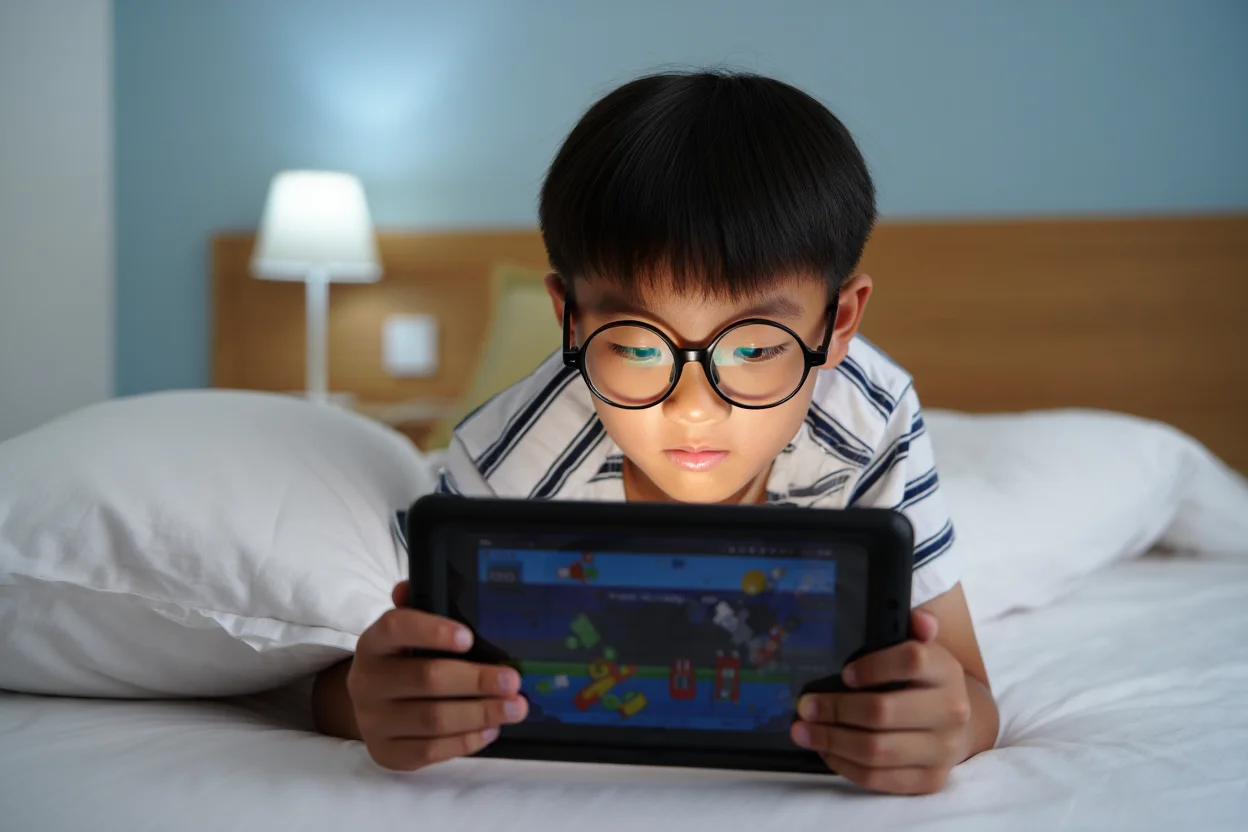
The Digital Dilemma
Screens are everywhere—tablets, smartphones, computers, and TVs have become part of daily life for children. But as screen time increases, so does concern over its impact on young eyes, especially the risk of myopia (nearsightedness).
How Are Screen Time and Myopia Linked?
Myopia is a condition where distant objects appear blurry, and it’s becoming more common among children. One major reason? More time spent on screens and less time outdoors. When kids focus on close-up tasks like reading or using devices for long periods, their eyes can become strained, increasing the risk of developing myopia.
Signs Your Child Might Be Nearsighted
Look out for these common symptoms:
- Squinting or frequently rubbing their eyes
- Complaints of headaches or eye strain
- Sitting very close to the TV or holding devices close to the face
- Difficulty seeing distant objects, like the classroom whiteboard
If you notice these signs, it’s a good idea to schedule an eye check-up.
Expert Tips to Protect Your Child’s Eyes
1. Limit Screen Time:
Follow the “20-20-20” rule—every 20 minutes, take a 20-second break and look at something 20 feet away.
2. Encourage Outdoor Play:
Aim for at least 2 hours of outdoor activity daily. Natural light and looking at distant objects help reduce myopia risk.
3. Create Good Viewing Habits:
Keep screens at least an arm’s length away and ensure the room is well-lit to minimize eye strain.
4. Regular Eye Checks:
Schedule routine eye exams to catch any vision problems early.
The Bottom Line
While screens are a part of modern life, balancing screen time with outdoor activities and healthy habits can help protect your child’s eyesight. Stay alert to signs of myopia and consult an eye care professional if you have concerns—your child’s eyes will thank you!
